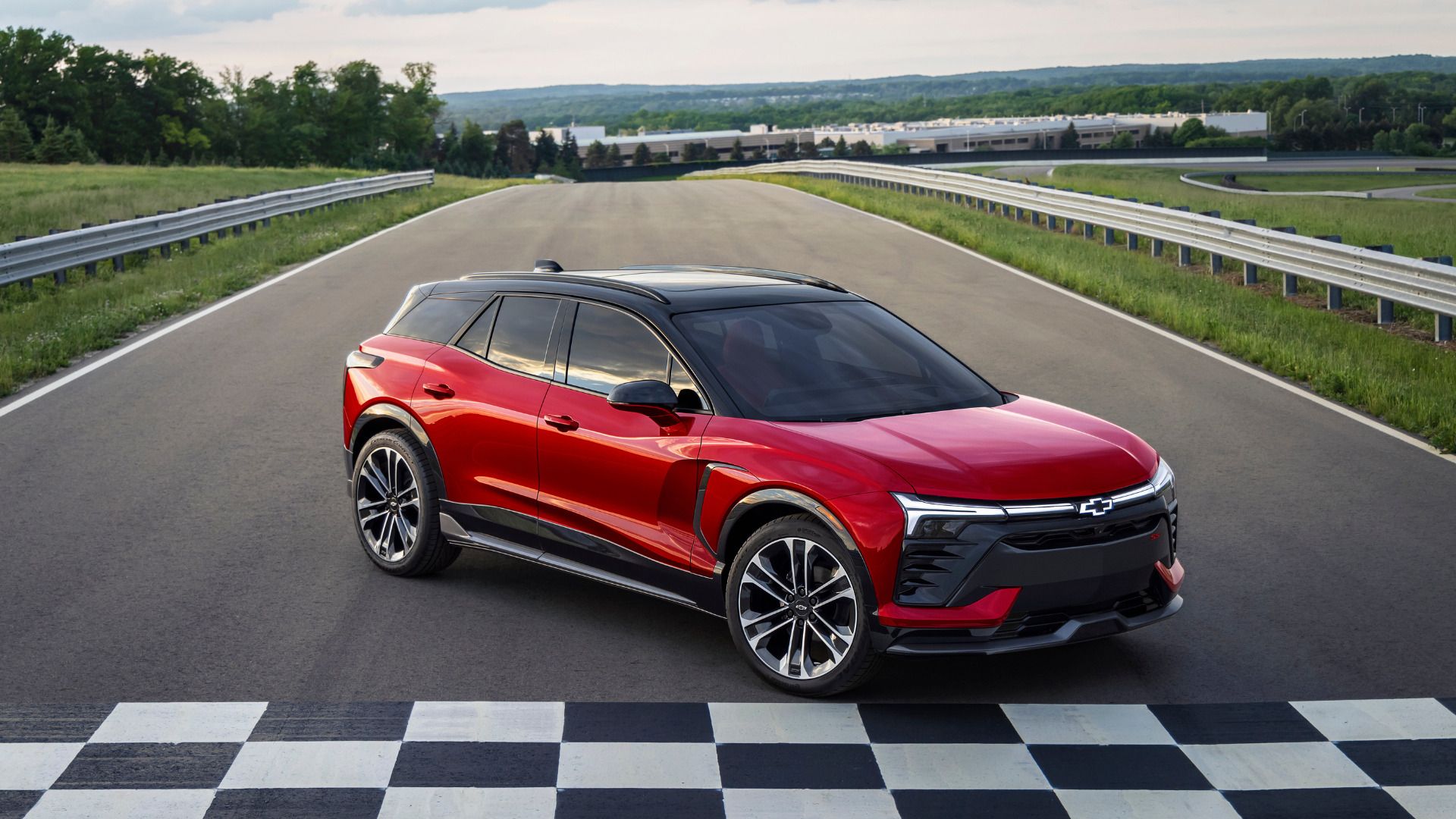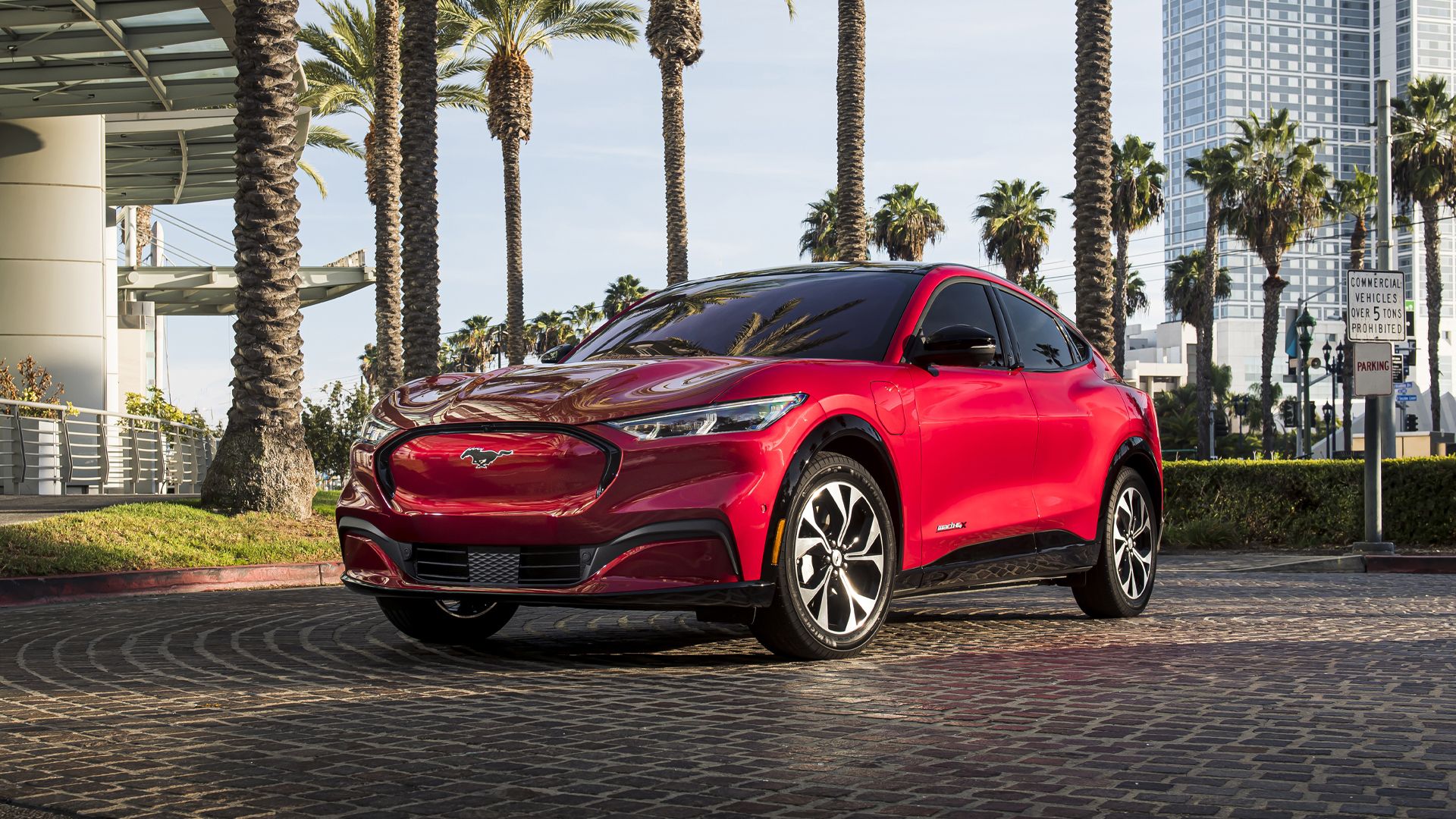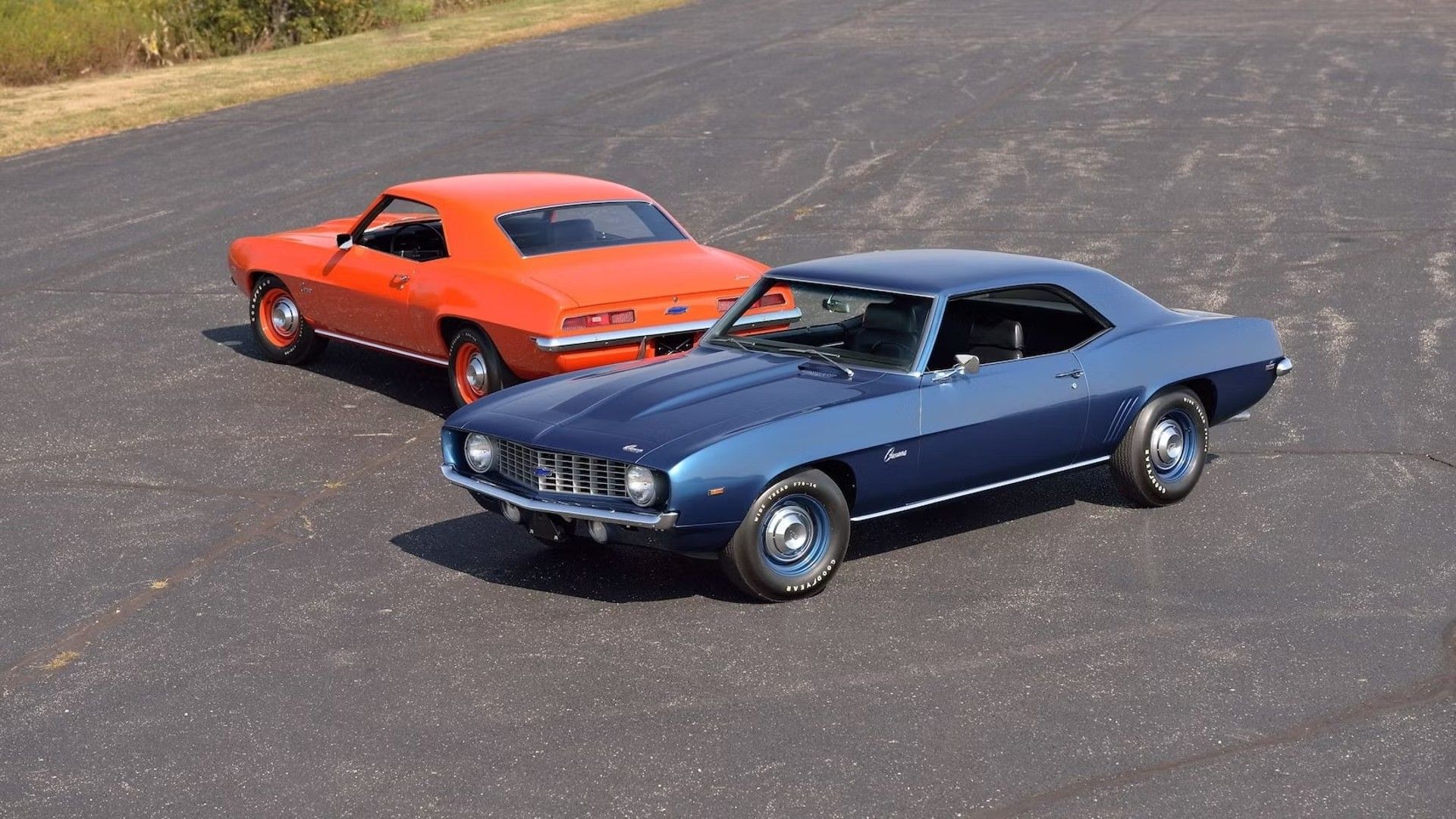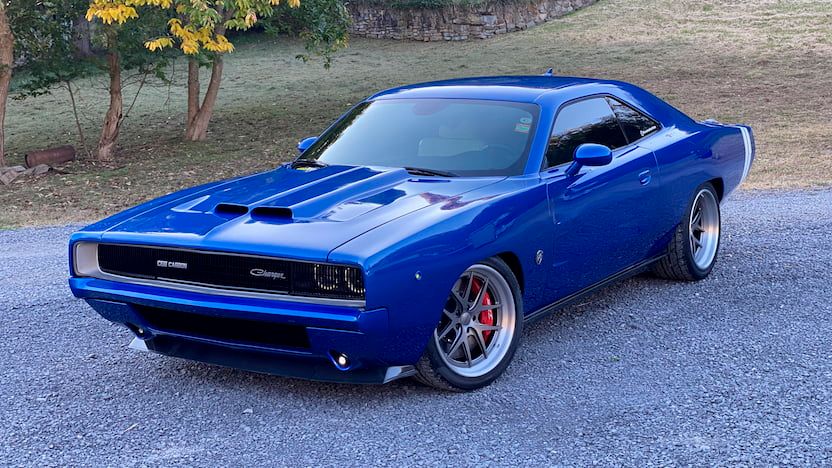Amidst the plethora of EVs and SUVs, American automakers are forced to do the unthinkable to their iconic models to try to weather out the storm
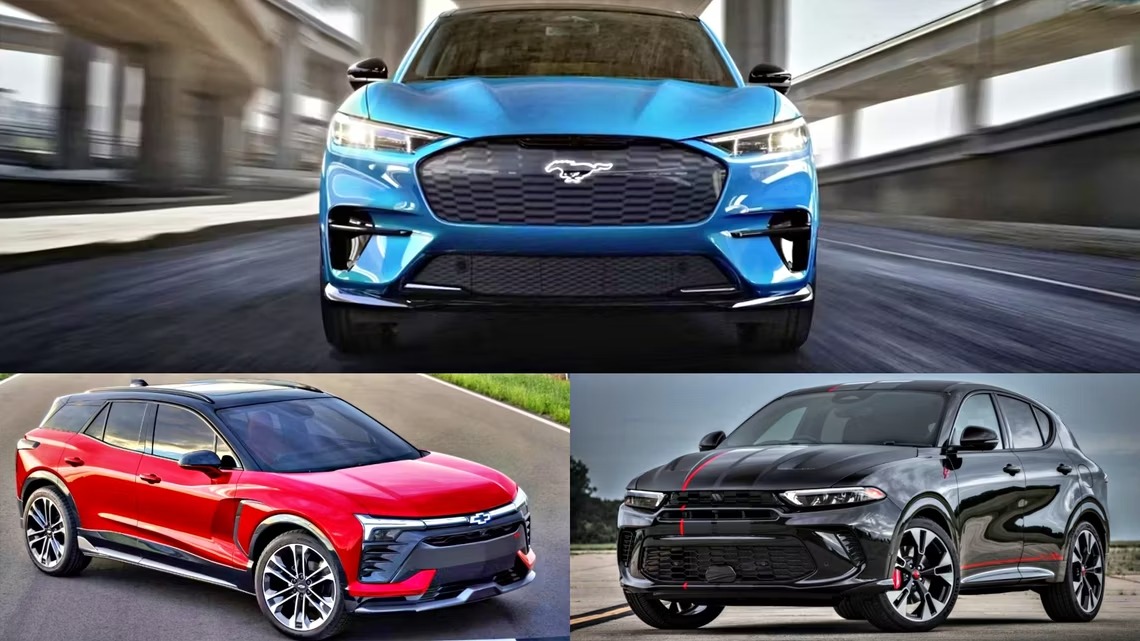
A shot of the Ford Mustang Mach-E, Chevrolet Blazer, and Dodge Hornet SUV
The Crossover and SUV craze is still going strong and much like other companies, American car manufacturers are forced to make tough choices to ensure their survival in the coming era. Electric vehicles are also doing great despite many carmakers working on synthetic fuels and alternative means of propulsion.
Combining an SUV/crossover body style with an electric powertrain seems to be the best bet for a car company to ensure its longevity in the coming years. Because of this, we see cars like the Mustang Mach-E and Dodge’s first e-Muscle car. Even the Corvette couldn’t escape the times as the C8 introduced many model firsts, even bringing electrification to the table. Naturally, this begs the question: what does the future hold for American Muscle cars, and will there be any place for proper, old-school Muscle left?
Iconic American Nameplates To Live On As More Practical And Sustainable Propositions?
Camaro, Blazer, Mustang, and Challenger with their big burly V-8s are some of the most iconic nameplates to have graced American performance models for decades. Having been around since the 1960s, they hold a special place both in the hearts of enthusiasts and in the history of their respective brands. Depriving us of these great names would be a huge disservice to both fans and the automakers themselves, which is why the big three are trying to figure out the best possible ways to reinvent their most iconic models. But having said that, using such celebrated names on EVs and SUVs, has been a fairly controversial move and is a trend that needs to stop.
Foreign manufacturers have taken similar steps with their own model lineups. Mazda almost gave us a rear-wheel-drive Mazda 6 and a proper RX-7 successor, but “killed” them both in favor of crossovers and SUVs. Still, it is a much better faith than what Mitsubishi did with the Eclipse.
Did Ford Take The Wisest Approach?
It’s very difficult to please everyone, but so far, it seems Ford has taken the wisest course of action. The Ford Mustang has been around since 1964, always as a two-door coupe and convertible. It is the only Muscle car that still survives in its original format, but in 2021, the “pony” branched out, and we got a Mustang-inspired EV crossover, dubbed the Mustang Mach-E. The fully-electric, American crossover from Ford proved a great success as the company sold 150,000 units in just over one year. At the same time, we still get the classic, V-8-powered Muscle car from Ford, which is how Ford offers two very different Mustangs for two very different audiences.
With that said, it is worth noting that the Mustang belongs to the sports car segment, which is the smallest of all. Naturally, this segment brings the least amount of profit, unless you are an exotic carmaker like Ferrari or McLaren. In the past, we reported on information that proves Ford is considering a hybrid version of the Mustang. The question is how many more generations of the classic Ford Mustang can we get, before it becomes a completely different vehicle or will the Mach-E remain the sole model to carry the Mustang torch?
Dodge Made The Boldest Move Yet
As far as Muscle cars go, Dodge is known for having some crazy ideas. Moreover, it’s putting them into practice, as we have seen with the countless iterations of Hellcat-powered MOPARs. In 2022, Stellantis made another bold move – it gave us the first, fully-electric Muscle car. Moreover, it slapped not just the Charger nameplate, but also the Daytona name, and the long-forgotten Fratzog logo.
It’s safe to say Dodge hit the trifecta with this one. Despite that, the 2024 Charger Daytona EV is a proper, EV analog to the classic Muscle car. It has the retro-styling, clearly inspired by the 1968-1970 Dodge Charger, and it will, reportedly start at just under $50,000, which would make it a great bang for the buck, compared to other performance EV models. But it’s models like the new Dodge Hornet SUV that really bother MOPAR fans. It’s a rebadged Alfa Romeo Tonale that simply doesn’t fit into the brand.
Those That May Not Make It
The sixth-generation Chevrolet Camaro as we know it will retire with the 2024 model year. Chevrolet says the Camaro nameplate will live on although we don’t know in what format just yet. This confirms a suspicion we had in the past that the 2024 Chevrolet Blazer EV SS will pick up the torch for Chevy’s performance models, positioned under the Corvette range. While not yet confirmed, various sources talk about the Camaro returning as an all-electric performance sedan.
Chevrolet aims to become a fully-electric car manufacturer by 2035 although with the current push-back against full electrification from various manufacturers in Europe, whether the strategy to go fully electric succeeds or not remains to be seen. With all that said, it seems like the Chevy Camaro will be the only one of the three American Muscle cars to forego its roots entirely. Currently, you can still buy an ICE-powered Mustang, and the Dodge Charger Daytona, despite now being all-electric, is still heavily inspired by its old-school forbearers.
Mercifully, American Muscle Will Live On, Mostly Through Custom Builds
One cool thing about all that is that there is no shortage of custom shops, willing to reimagine, replicate, or restore classic (and more modern) Muscle cars. While ExoMod will gladly take a modern Charger Hellcat and turn it into an epic homage to the 1968 Charger, companies like Electric Classic Cars or Zelectric Motors will turn your classic gas-guzzler into an all-electric classic car (if that’s what you want).
American carmakers are finding it increasingly difficult to justify developing a new Muscle car from the ground up since performance cars, in general, make for a very small portion of a company’s profit, despite having a bigger profit margin than more mainstream models. We are already seeing foreign automakers like Toyota, which teamed up with other companies for its most recent sports cars, or Nissan with its “new” Z, which is essentialy, a modernized 370Z with a different engine.
Ford followed a similar trend with the S650 Mustang, which carries over the same 2.3-liter EcoBoost and 5.0-liter Coyote engines from the previous model, along with a refined version of the S550 chassis. In conclusion, should the big three decide to carry on with the classic Muscle car formula, anything ICE-powered that comes out from this point onwards will, likely be based on older generations and not developed from ground zero.



